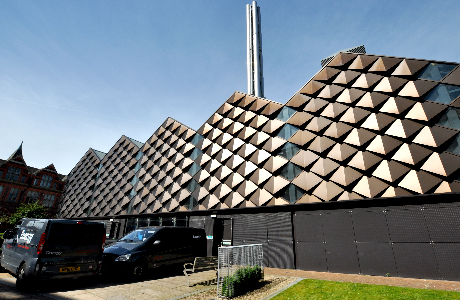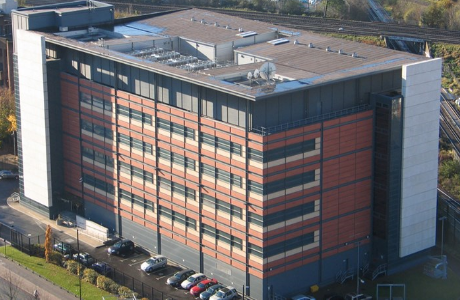The UK has been a key player in the development of combined heat and power (CHP) technology in recent decades. CHP plants are captive power plants that generate electricity, typically from gas, and in-turn recover heat from the generating sets, either as hot water or steam for local use. Generating power close to the site of use not only negates losses associated with the transmission of electricity, but also improves total fuel efficiency to around 90%.

Liverpool University Energy Centre
Universities and hospitals have utilised gas engine CHP technology for decades now. Early installations include Dundee University and the Freeman Hospital in Newcastle. Both of these institutions deployed Jenbacher gas engines over 15 years ago to reduce their fuel consumption. Both have now refurbished the facilities using the latest engine models with even higher efficiency levels. Early district energy schemes were also deployed in cities such as Aberdeen, the colder climate making them prime locations for efficient use of electricity and heat.
The key to the success of CHP installations is firstly matching the site’s electricity and heating needs to an appropriate generator and heat recovery system. This is done through a detailed technical evaluation of the half hourly energy consumption data, if available. A decision can then be made upon whether hot water or steam would best meet the site’s heating requirements. If the site has a cooling requirement it is also possible to fit an absorption chiller to support refrigeration or air conditioning systems.
The next consideration is the machinery and systems that supports the performance of the core generating set. If either the generator or ‘balance of plant’ are inappropriate for the application then operational problems may occur in the future. The final consideration for the success of a CHP installation is the aftersales support. Much like a car engine CHP engines have scheduled maintenance. For a machine that runs for almost the entire year, it is important to conduct these as per manufacturer’s guidelines and supported by highly trained and equipped service engineers, such as those provided by gas engine specialist Clarke Energy.

Natural History Museum, London
Recent years have seen a much wider deployment of CHP technology for a range of new applications. Rising fuel costs and a starker ‘spark-spread’ – the difference in the price of electricity and gas – along with a focus on reducing carbon emissions are all important drivers. London in particular has seen massive growth in CHP technology over recent years. A range of high profile buildings now utilise gas engines for CHP including the National Gallery, the Shard, and the Natural History Museum. Deploying the technology supports the cost and carbon reduction drive and is also looked on favourably by planning departments from a sustainability perspective.
District energy in the capital now forms the back-bone of many large new commercial developments. The King’s Cross scheme has two bright pink Jenbacher engines supporting a large district heating scheme supplying commercial and residential properties alike. The engines being painted pink in support of a breast cancer charity. The redevelopment of the area around Victoria railway station ‘Nova Victoria’ scheme also is using CHP to reduce fuel costs and carbon emissions.
Hospitals too in London continue to adopt CHP technology with Guys, St Thomas’, Great Ormond Street and Bart’s all utilising the technology as a core to their approach to energy usage. The operational cost focus therefore can be on saving on energy and deploying more resources for patient treatment.

Citibank Data Centre Site, London
Datacentres are an emerging market for CHP technology. The focus here is on combined cooling and power rather than combined heat and power. Citibank’s datacentre in London is the first in the UK to use the technology and can generate 71% of the datacentre’s electricity. It is also financed through a novel investment scheme with London-based SDCL (Sustainable Development Capital Limited). This reduces or negates the capital cost of the scheme for the developer which in turn contracts to pay for the power at a given rate.
In summary the well-engineered early Scottish CHP schemes helped pave the way for the modern expansion in CHP technology. These facilities have proved so successful they are either being expanded or refurbished with the latest technologies. Many new commercial and residential developments in the capital have followed suit as a way to help reduce both carbon emissions and costs, laying the framework for a more sustainable city.




